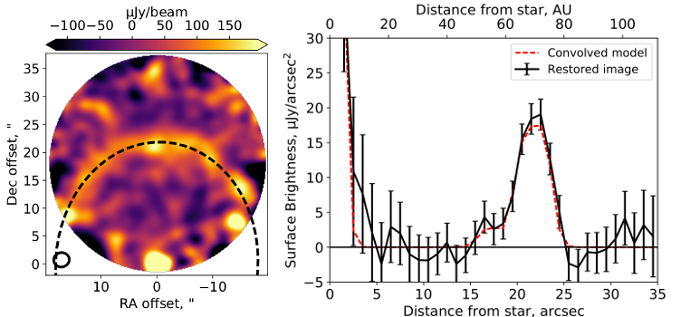 The Northern Arc of ε Eridani's Debris Ring as Seen by ALMA The Northern Arc of ε Eridani's Debris Ring as Seen by ALMA
The closest star to the Sun known to host a debris disc is epsilon Eridani. We observed this disc with the ALMA observatory in Chile. Due to the proximity of the system, we focused these first observations on the northern part of the disc in order to determine the width of the disc. We find the disc to be a very narrow ring, just 12 AU wide. The narrowness of the ring is suggestive of interactions with a planet that, like Neptune in the Solar System, is shaping the inner and outer edges of the ring. Further observations of the complete ring will allow us to more accurately determine the properties of this hypothetical planet.
(Read more...)
|
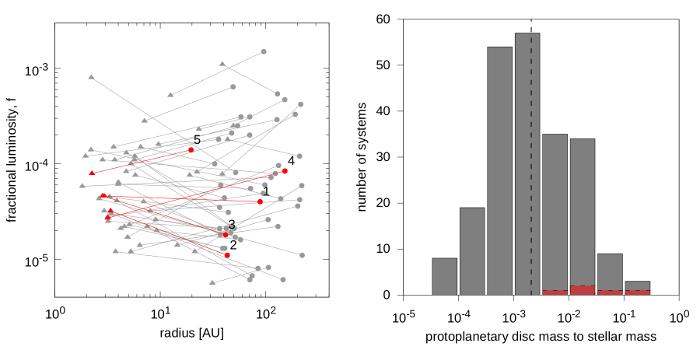 Does warm debris dust stem from asteroid belts? Does warm debris dust stem from asteroid belts?
Many debris discs reveal a two-component structure, including cold dust associated with Kuiper-belt analogues and warm dust at a few au of unknown origin. We investigated if this warm dust could stem from collisionally evolving asteroid belt analogues and, if so, how the progenitor protoplanetary discs must have looked like to produce the debris discs currently observed. We find that the warm dust in the vast majority of systems (98%; shown in grey) can indeed derive from "asteroid belts", while the remaining systems (2%; shown in red) require either cometary sources of dust, recent major collisions, or planetary system instabilities.
(Read more...)
|
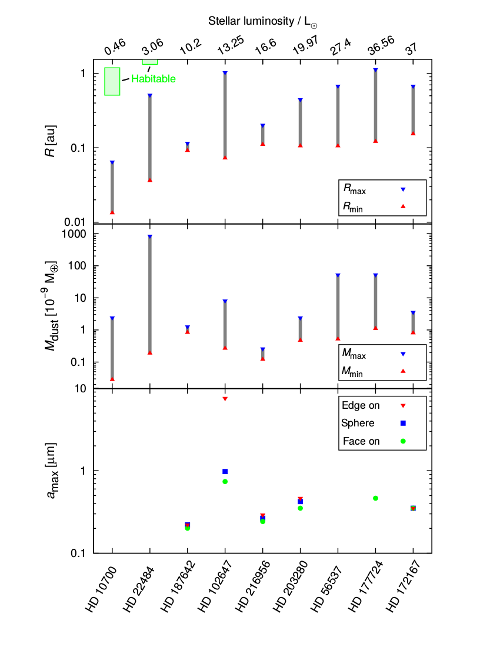
New constraints on the structure of hot exozodiacal dust belts
Recent interferometric surveys of nearby main-sequence stars reveal a faint near-infrared excess in roughly two dozen systems, which is attributed to dust located very close to the stars. We model the near- and mid-infrared observations of nine systems to constrain the properties of this so-called hot exozodiacal dust. Our results show that the grains should have radii from 0.02−0.15 μm to 0.2−0.5 μm. The dust should be located within ~1 au from the star. Furthermore, we find a significant trend for the disc radius to increase with the stellar luminosity, with the possibility of a constant temperature of hot dust in all the systems studied.
(Read more...)
|
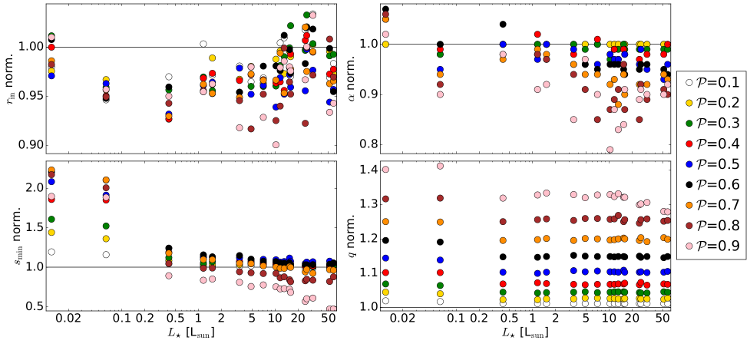 Dust porosity may affect the analysis of debris disc observations Dust porosity may affect the analysis of debris disc observations
Debris discs are often modelled assuming compact dust grains, but there is increasing evidence that dust may be porous. We quantify which systematic errors would be introduced when modelling debris discs composed of porous dust with a disc model that assumes spherical, compact grains. The figure shows the results as functions of stellar luminosity for different degrees of porosity. The inferred disk radius (top left) and density slopes (top right) are barely affected. However, the minimum grain size (also known as 'blowout size', bottom left) is overestimated or underestimated by up to a factor of two. The slope of the grain size distribution (bottom right) derived using compact grains is significantly overestimated as well.
(Read more...)
|
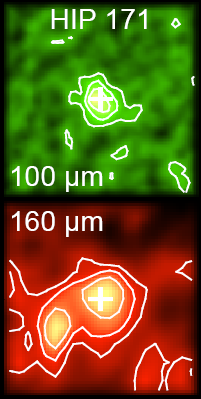
It is a natural desire of astronomers to find planetary systems similar to the Solar System in which we live - but instead, they often see something very different, and totally unexpected. ESA's Herschel space observatory has now found six Sun-like stars that are surrounded by mysterious cold dusty belts, different from everything known previously.
(Read more...)
|
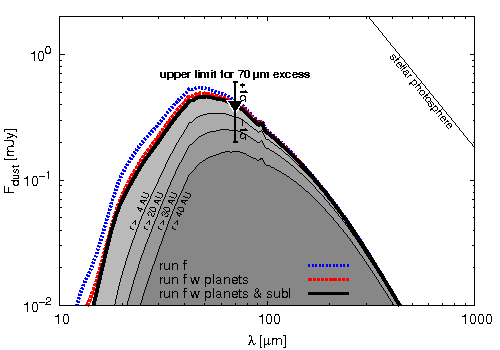
We accessed the expected EKB dust disk properties by modeling. We treated the debiased population of the known trans-Neptunian objects (TNOs) as parent bodies and generated the dust with our collisional code. The resulting dust distributions were modified to take into account the influence of gravitational scattering and resonance trapping by planets on migrating dust grains as well as the effect of sublimation.
(Read more...)
|
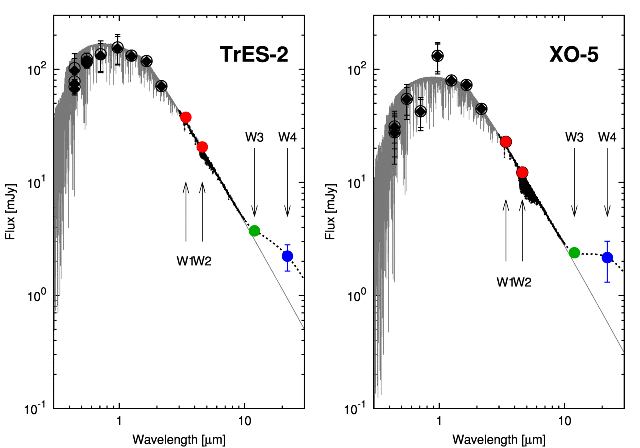
Debris disks are known to exist around many planet-host stars, but no debris dust has been found so far in systems with planets discovered by the transit method. In the recently published catalog of the Wide-Field Infrared Survey Explorer (WISE) satellite...
(Read more...)
|
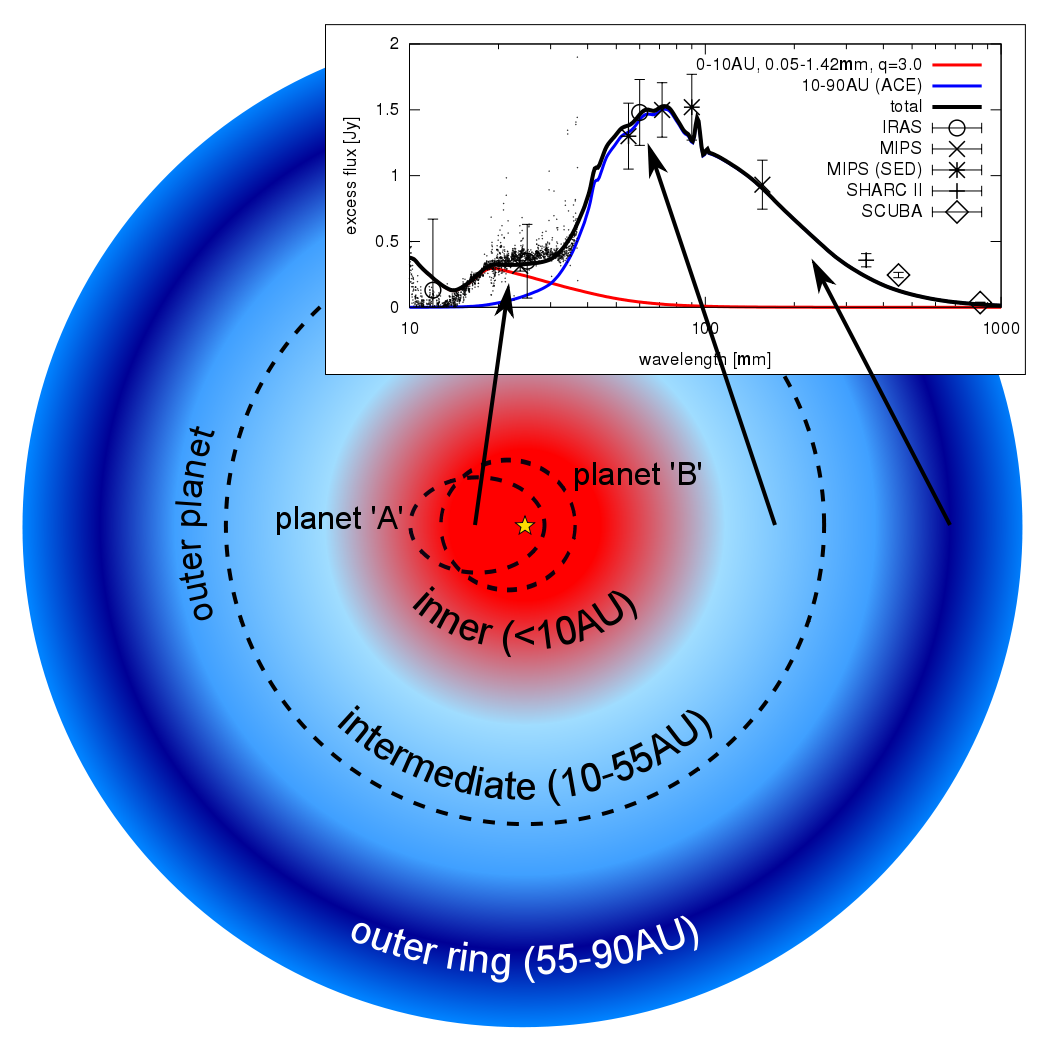
The nearby star epsilon Eridani hosts one known inner planet, an outer Kuiper belt analog, and an inner disk of warm dust. Spitzer/IRS measurements indicate that warm dust is present at distances as small as a few AU from the star. We tested the hypothesis that the observed warm dust is generated by collisions in the outer belt and is transported inward by Poynting-Robertson drag and strong stellar winds... (Read more...) |
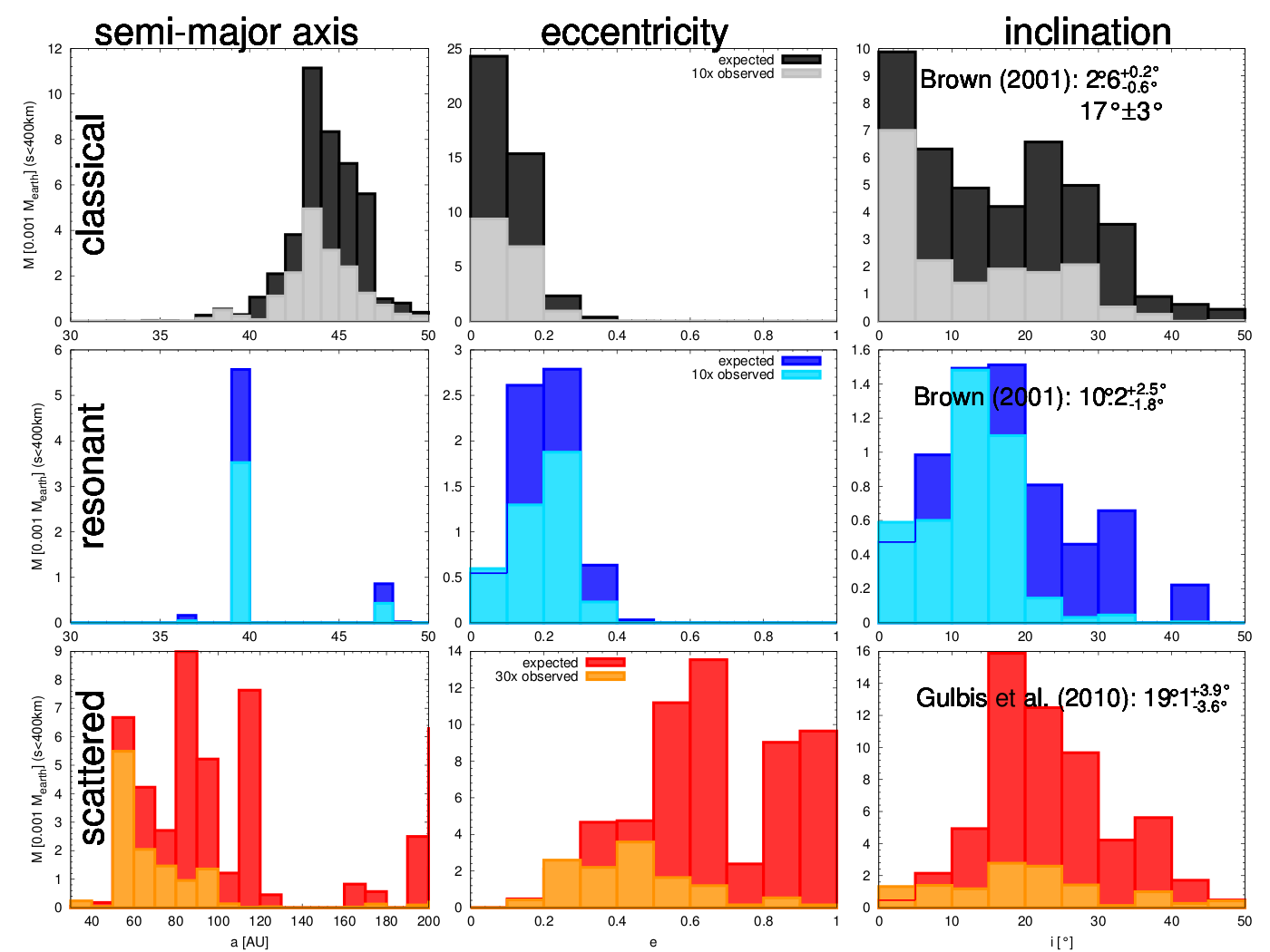
The Edgeworth-Kuiper debris disk is (obviously) the nearest debris disk known. Like in all other debris disks large planetesimals produce dust in mutual collisions. The big difference to extrasolar Kuiper belts is that we actually can see the planetesimals. More than 1250 objects have been discovered up to now. Of course a lot more should be there... (Read more...) |
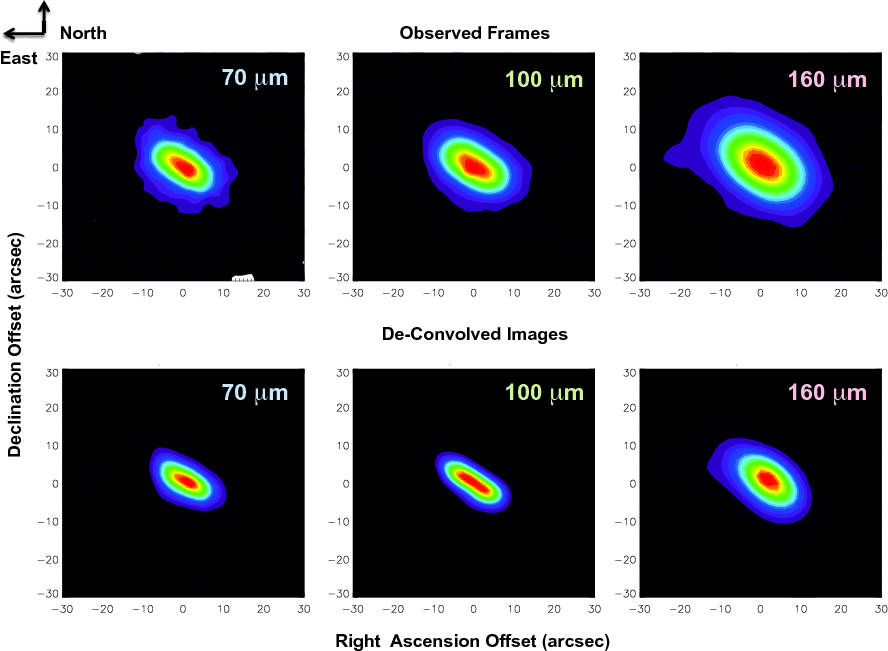
The Herschel Space Observatory, with its 3.5 meter-sized mirror, represents the largest space-based telescope in the history. It was launched into space in May 2009 and is now conducting observations in the far-infrared, probing the coldest dusty and gaseous regions in the Universe. Herschel observations cover a diversity of objects, ranging from planets in the Solar System to distant galaxies... (Read more...)
|
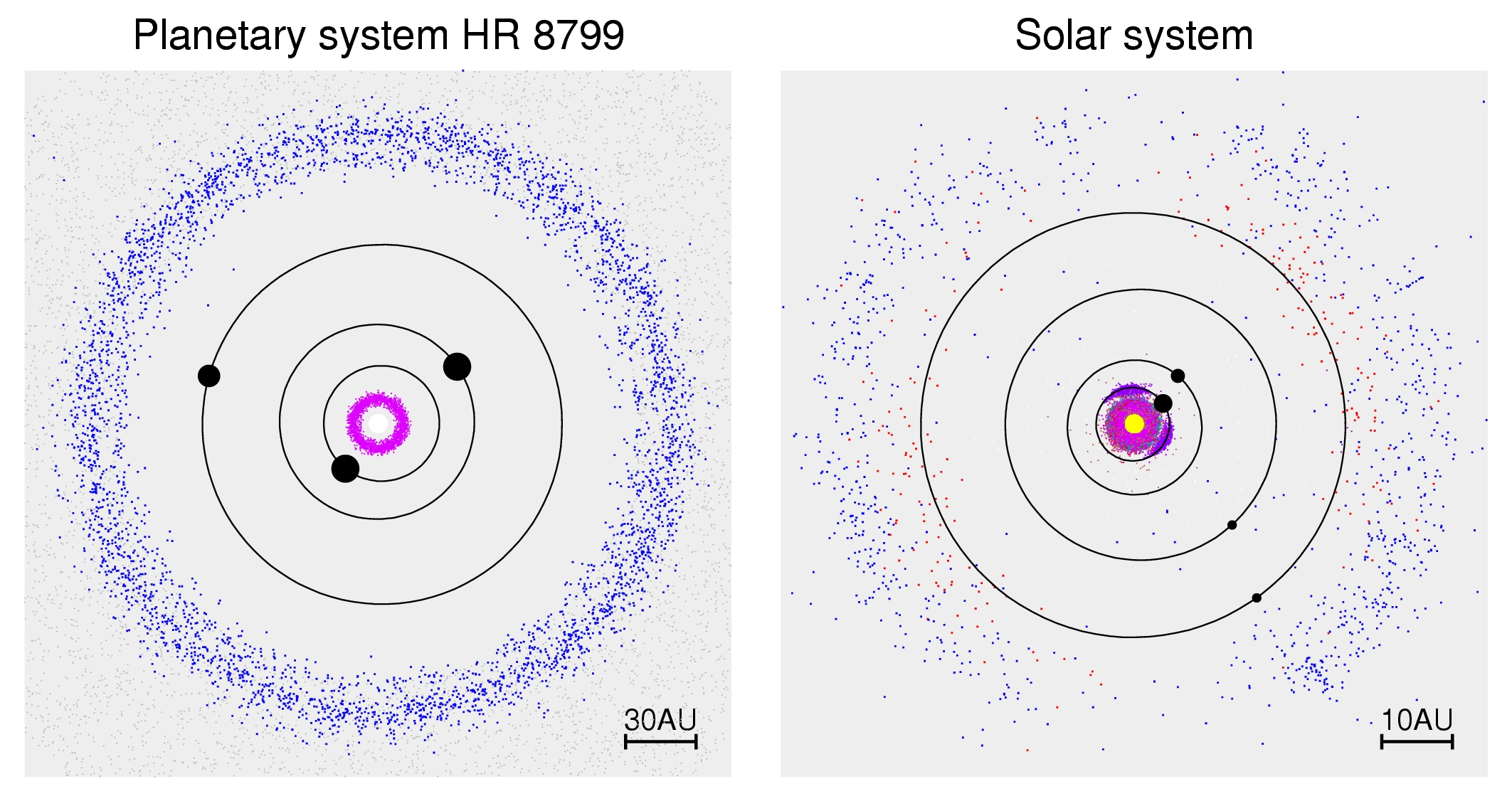
HR 8799 is a planetary system with several planets, planetesimal belts, and dust. We made a coherent analysis of various observational data for all known components of the system... (Read more...) |
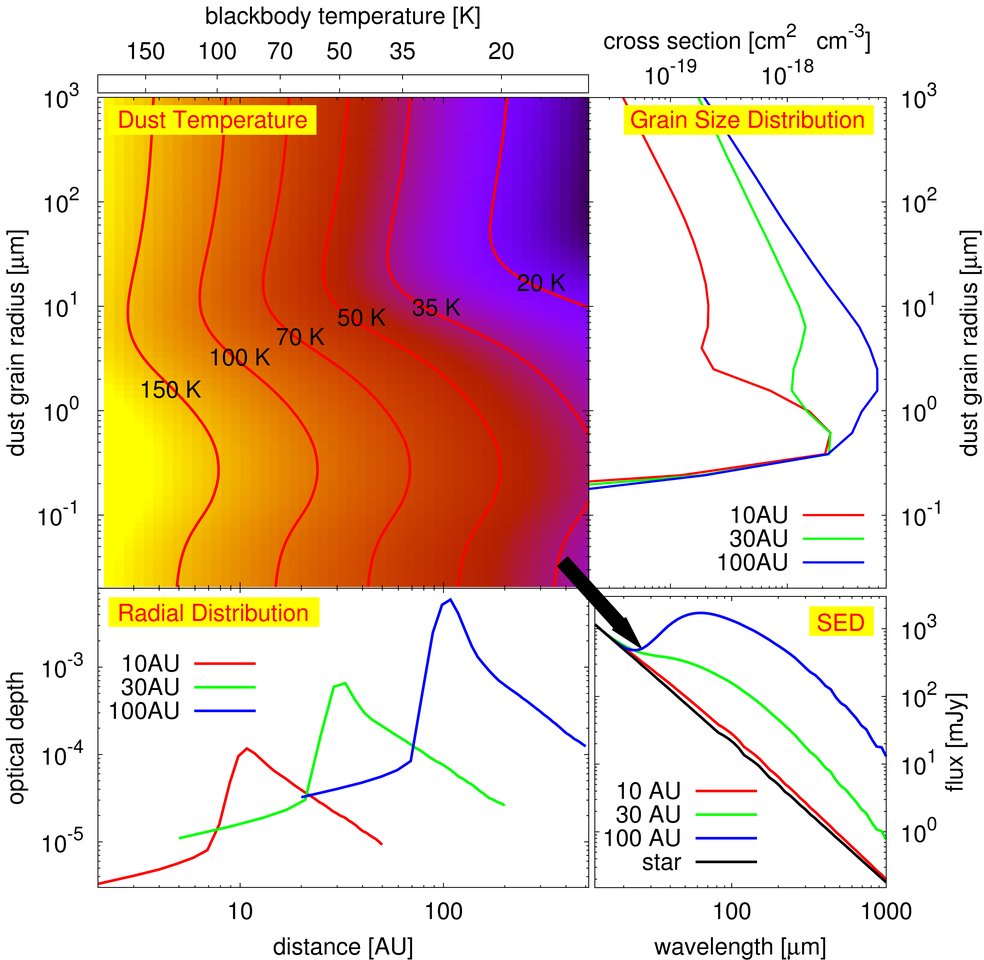
Debris disks are dusty disks that surround main-sequence stars. What is actually observed is the thermal emission of dust, which is produced in frequent collisions between star-orbiting planetesimals. The latter are small bodies that must have accreted at early epochs and survived possible planet formation processes. The planetesimals around a star are typically grouped in one or several belts, similar to the Kuiper belt and asteroid belt in the solar system... (Read more...)
|
|
The long-term evolution of a debris disc is shown to be dominated by the slow transition of the population of planetesimals from the size distribution set at their growth phase to the steady-state size distribution defined by disruptive collisions. This transition is crucial for the temporal evolution of the observable dust masses and luminosities and for the deduced total disc masses. The developed models are compatible with observational statistics from the Spitzer Space Telescope surveys... (Read more...)
|

Observations have revealed a large variety of structures (global asymmetries, warps, belts, rings) and dynamical phenomena ("falling-evaporating bodies" or FEBs, the "β-Pic dust stream") in the disc of β Pictoris, most of which may indicate the presence of one or more planets orbiting the star... (Read more...)
|
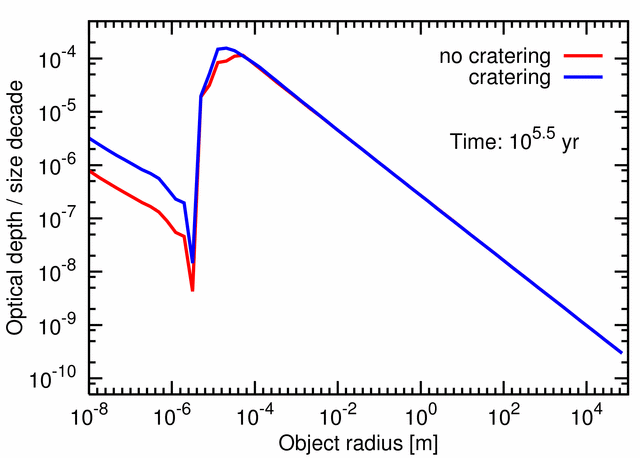
The subject of the project has been models of the size distribution and the spatial distribution of the material in so-called debris discs around main-sequence stars. Thesediscs, which are considered as remnants of the formation of planetary systems, are ensembles of objects from sub-micron-sized dust to planetesimals with diameters up to hundreds of kilometres... (Read more...)
|
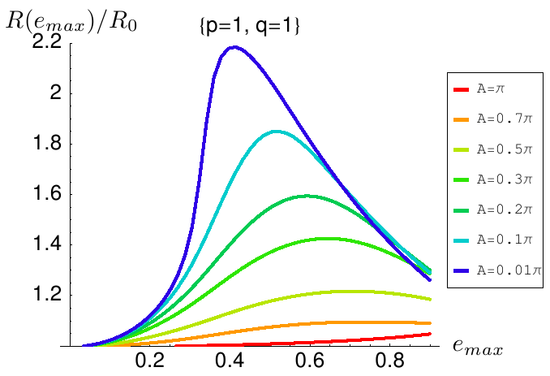
This project considers theoretical models of circumstellar debris discs. The main focus is the combination of mean motion resonances between a planet and circumstellar small bodies, which create structures, and collisions among the small bodies, which smear the structures out... (Read more...) |